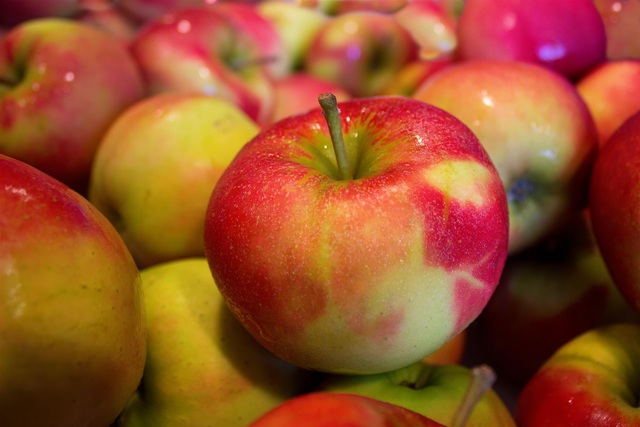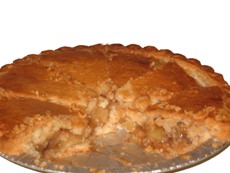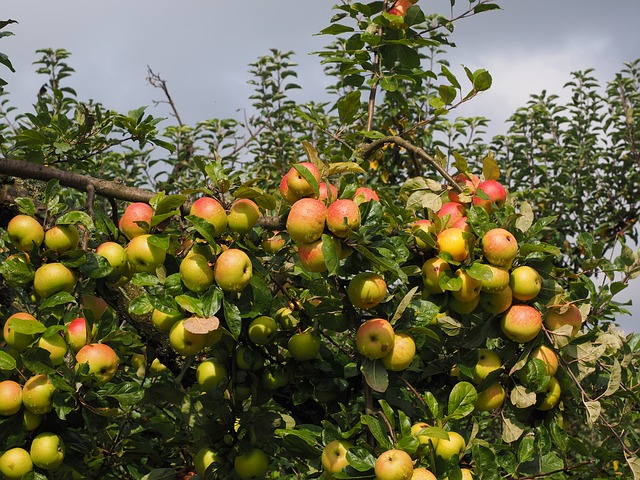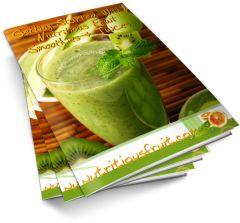Apples: Origins - Consumption - Nutrition Facts - Health Benefits
|
|
|
Contents
- Geographic origin and regions grown
- Common consumption today
- History of consumption
- Nutrition Facts: Vitamins, minerals and phytochemical components
- Health Benefits: Medicinal uses based on scientific studies
- Bibliography
When was the last time you bit into a delicious, scrumptious apple? I am sure you enjoyed every moment of the experience.
Geographic Origins and Regions Grown

The tree belongs to the rose family (Rosaceae). In 2005, 55 million tons of them were grown worldwide with the best of the fruit growing in temperate zones. China produced about two-fifths of this total.
The United States is the second leading producer, accounting for more than 7.5% of the world’s production. Turkey, France, Italy and Iran are among the leading exporters. Did you know that more than 60% of those sold commercially in the United States are grown in Washington State?
In fact, imported fruit from New Zealand and other more temperate areas are competing with the United States and are successfully increasing production each year.
History of Consumption
It seems as if they have been a major food source since creation. For example, the fruit and their trees are mentioned six times in the Bible.
The Romans enjoyed them and during their numerous military conquests, spread various varieties throughout England and other parts of Europe. Even the early American colonists brought the seeds and trees with them from England.
Common Consumption Today
 |
 |
There are endless ways to enjoy them. They can be juiced at home from fresh fruit by using commercially available juicers. This is an inexpensive way to provide your body with essential nutrients. Of course you should always thoroughly wash your fruit before juicing them.
Since most of its vitamin C content is in the skin, it is best to juice them with the peels. To prevent your juice from turning brown, push a lemon through your juicer before you begin.
Also, as the fruit ripens, its skin retains a lot of its nutrients and flavor, so allowing a little bit of time for them to ripen before you juice them will improve the taste and nutrient content of your fresh, homemade juice.
They can also be canned, making them perfect for long-term storage and transport. On a more commercial scale, they are fermented to create pectin, vinegar, cider, and even the juice. The cider that is distilled creates the spirits calvados and applejack. Another approach to making hem an enjoyable beverage is by producing wine with them.
They are often used in salads, jams, jellies, and pies. And they also play a big part in assorted winter desserts such as cake, crisp, crumble, and pie. They can also be consumed stewed, baked, and dried.
When pureed they are commonly known as applesauce. They can also be made into a jelly and a butter. They can also be frozen, baked or eaten fresh off of the tree. Lastly, they are used as a sweetener in many meat dishes.
Nutrition Facts: Vitamins, Minerals and Phytochemical Components
The fruit contain minerals like calcium, iron, magnesium, phosphorus, potassium, sodium, zinc, copper, manganese, boron, and selenium. They also contain vitamins like thiamin, riboflavin, niacin, pantothenic acid, folate, vitamin C, B6, B12, A, E, folic acid, and tocopherol.
Phenolics and phytochemicals like procyanidin B2, epicatechin, and quercetin are common antibiotics found in them (4), (5). Finally they also contain fiber, cyanogenic glycoside, amygdalin, malic acid, and pectin.
Health Benefits: Medicinal Uses Based on Scientific Studies

It has been said that “An apple a day will keep the doctor away”. Indeed current research shows that they may decrease the threat of certain cancers like lung, prostate, and colon cancer (3).
They, similar to other fruits, are full of Vitamin C and many antioxidant compounds, which could decrease the threat of cancer by reducing the amount of accumulated DNA damage (5).
The fruit also contain essential trace elements, in particular boron. Boron helps harden bones and there is no doubting the fact that strong bones help prevent osteoporosis.
Pectin is a soluble fiber that aids human digestion. The pectin content of the fruit, although lower than amounts found in different fruits, assists the body in controlling bowel movements and may be the component they contain that decreases the threat of colon cancer (8).
They can also help people control weight loss, cholesterol levels, and heart disease. Since they contain fiber, this may help prevent the reabsorption of fat into the circulation.
Because of their bulk, they also contain a higher caloric value which is similar to the majority of fruits and vegetables (7).
They contain chemicals that can shield the brain from several types of neurological damage that activate neurodegenerative-diseases like Parkinson’s and Alzheimer's disease (1), (4).
In fact, various studies show that fresh fruit contain phenolics. Phenolics are antioxidants that occur naturally and are known to defend nerve cells from neurotoxicity stimulated by oxidative stress.
Although the quantity of phenolics found in them changes every season, a sufficient amount of phenolics is found in all varieties (8).
They are also rich in phytochemicals. Phytochemicals are molecules that possess strong antioxidant properties. They have been reported to protect the blood vessels from becoming clogged with cholesterol any may therefore prevent strokes and heart attacks (2).
The main phenolic phytochemicals in the fruit are procyanidin B2, epicatechin, and quercetin (2), (7).
Scientific studies seem to indicate that their seeds are slightly poisonous. The seeds contain little amounts of cyanogenic glycoside, and amygdalin, but to have a toxic effect, a large amount would need to be consumed (6).
Like most commercially available fruits and vegetables, there is a danger of pesticide contamination, which is usually associated with a number of prevalent diseases.
Peeling or washing all fruits before consumption reduces the risk of pesticide intake but by peeling the fruit, beneficial nutrients will be reduced.
Eating them can also clean teeth as well as assist with the removal of food that is trapped in between the teeth.
One precaution about apple consumption is that they contain malic acid which is capable of corroding the enamel in teeth over time. However, this only occurs in individuals who eat massive quantities for decades.
Healthy Apple Based Products
Bibliography
- American Chemical Society. (2004) Compound In Apples May Help Fight Alzheimer's Disease. Science Daily. Retrieved December 4, 2007 from http://www.sciencedaily.com/releases/2004/11/041116215006.htm
- Boyer J, Liu RH. (2004) Apple phytochemicals and their health benefits. Nutrition Journal, 12:3-5.
- Davis JL. (2004) An apple a day for cancer prevention. Retrieved October 23, 2007 from http://www.webmd.com/cancer/news/20041018/an-apple-a-day-for-cancer-prevention.
- Heo HJ, Lee CY. (2004) Protective effects of quercetin and vitamin C against oxidative stress-induced neurodegeneration. Journal of Agricultural Food Chemistry, 52 (25):7514-7.
- Orchard of Health. (2007) Apple types and nutrition. Retrieved October 23, 2007 from http://www.orchardofhealth.com/applenutrition.htm
- The Everything Development Company. (2007) Apple Seed. Retrieved December 11, 2007 from http://everything2.com/index.pl?node_id=1414841
- The George Mateljan Foundation. (2007) Apples. Retrieved October 23, 2007 from http://www.whfoods.com/genpage.php?tname=foodspice&dbid=15#healthbenefits
- Washington Apple Commission. (2007) Nutrition facts. Retrieved October 23, 2007 from http://www.bestapples.com/healthy/healthy_nutritionfacts.shtml
Disclaimer
Nutritiousfruit.com provides this website as a service. Although the information contained within the website is periodically updated, no guarantee is given that the information provided is correct, complete, and/or up-to-date. The materials contained on this website are provided for general information purposes only and do not constitute legal or other professional advice on any subject matter. Nutrtiousfruit.com does not accept any responsibility for any loss, which may arise from reliance on information contained on this website. The information and references in this website are intended solely for the general information for the reader. The content of this website are not intended to offer personal medical advice, diagnose health problems or to be used for treatment purposes. It is not a substitute for medical care provided by a licensed and qualified health professional. Please consult your health care provider for any advice on medications.
Didn't find what you were looking for? Search here...

Amazon Search Box:
Did you like this page?
|
|
|





